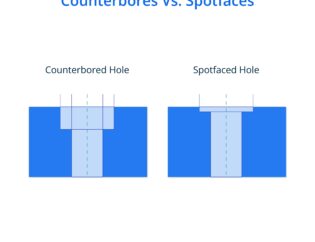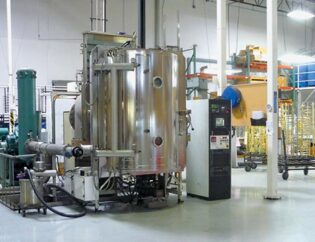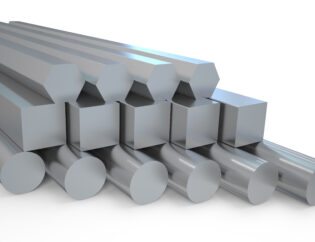Carbon fiber 3D printer filament is revolutionizing the world of additive manufacturing, offering unparalleled strength and lightweight properties. As industries increasingly seek durable materials for prototyping and production, understanding carbon fiber filament becomes essential. This guide will delve into its unique characteristics, applications, and advantages over traditional materials.
Readers can expect to learn about the composition of carbon fiber filaments, their compatibility with various 3D printers, and tips for optimal printing. We will also explore the benefits of using carbon fiber in different projects, from aerospace to automotive applications. By the end of this guide, you will be equipped with the knowledge to make informed decisions about incorporating carbon fiber filament into your 3D printing endeavors.
Carbon Fiber 3D Printing: The Complete Guide
Carbon fiber filament is a novel material making waves in 3D printing and additive manufacturing. As the name suggests, it incorporates carbon fiber—a solid and lightweight fiber used in aerospace and sports—made from thin strands of carbon. This allows carbon fiber filament to produce 3D-printed parts with exceptional durability that are still lightweight. But what exactly is carbon fiber filament, and why should those involved in 3D printing care? Let’s start with the basics.
Understanding Carbon Fiber Filament
Carbon fiber filaments are typically made by infusing carbon fibers into standard thermoplastics like PLA, ABS, or Nylon. This infusion enhances the mechanical properties of the base material, resulting in a filament that is not only strong but also lightweight. The unique properties of carbon fiber make it suitable for various applications, from prototyping to end-use parts in industries like automotive and aerospace.
Technical Features of Carbon Fiber Filament
| Feature | Description |
|---|---|
| Strength-to-Weight Ratio | Carbon fiber filaments can be up to 5 times stronger than steel by weight. |
| Dimensional Stability | Low thermal expansion coefficient ensures parts maintain their shape. |
| Heat Resistance | Can withstand high temperatures, making it suitable for demanding applications. |
| Abrasiveness | Carbon fibers can wear down standard brass nozzles, requiring hardened nozzles. |
| Printability | Requires specific settings and equipment for optimal results. |
Types of Carbon Fiber Filament
There are several types of carbon fiber filaments available, each with unique characteristics and applications. Below is a comparison of the most common types:
| Type | Description |
|---|---|
| Short Carbon Fiber | Contains fibers around 0.1-0.7mm long, offering good dispersion but less strength. |
| Long Carbon Fiber | Features fibers measuring 6-12mm, providing superior strength but requiring careful handling. |
| Reinforced Carbon Fiber | Combines short fibers with continuous strands for enhanced strength and printability. |
| PLA-CF | A biodegradable option that offers good strength and ease of printing. |
| PETG-CF | Combines the flexibility of PETG with the strength of carbon fibers. |
| PA-CF | Nylon-based filament that offers excellent strength and heat resistance. |
Advantages of Carbon Fiber Filament
- Strength: Carbon fiber is one of the toughest materials available, significantly increasing the strength of any filament it is mixed with.
- Lightweight: It provides a high strength-to-weight ratio, making it ideal for applications where weight is a concern.
- Dimensional Stability: Parts printed with carbon fiber filaments do not shrink after cooling, ensuring accurate dimensions.
- Heat Resistance: Carbon fiber can withstand high temperatures, making it suitable for parts exposed to heat.
Disadvantages of Carbon Fiber Filament
- Abrasiveness: The carbon fibers can wear down standard nozzles quickly, necessitating the use of hardened steel or ruby-tipped nozzles.
- Clogs: Smaller nozzles are prone to clogging due to the abrasive nature of the fibers, requiring larger nozzle sizes for reliable printing.
- Brittleness: While strong, carbon fiber composites can be more brittle than other materials, leading to potential failure under impact.
Best Practices for Printing with Carbon Fiber Filament
To achieve the best results when printing with carbon fiber filament, consider the following tips:
– Use Hardened Nozzles: Always opt for hardened steel or ruby-tipped nozzles to prevent wear.
– Adjust Print Settings: Slower print speeds and higher temperatures can improve extrusion and reduce issues like clogging.
– Optimize Retraction Settings: Fine-tune retraction settings to minimize oozing and stringing during prints.
– Ensure Proper Bed Adhesion: Use a heated bed and ensure it is leveled correctly to improve first-layer adhesion.
Applications of Carbon Fiber Filament
Carbon fiber filaments are used in various applications, including:
– Aerospace Components: Lightweight and strong parts for aircraft and drones.
– Automotive Parts: Components that require high strength and low weight for performance.
– Sports Equipment: Items like tennis rackets and bicycle frames that benefit from the material’s properties.
– Prototyping: Rapid prototyping of parts that need to withstand stress and strain.
Conclusion
Carbon fiber filament is revolutionizing the 3D printing landscape by offering unique properties that enhance the performance of printed parts. With its strength, lightweight nature, and heat resistance, it is becoming a go-to material for various industries. As technology advances, the accessibility and usability of carbon fiber filaments will continue to grow, making it an exciting area for both hobbyists and professionals.
FAQs
Q: How strong is carbon fiber filament?
A: Carbon fiber filament can be up to 5 times stronger than steel by weight, offering exceptional durability.
Q: Can any 3D printer use carbon fiber filament?
A: Not all printers can use carbon fiber filament. Printers need hardened nozzles and reinforced components to handle the abrasive material.
Q: How do you store carbon fiber filaments?
A: Store carbon fiber filament in a cool, dry place away from moisture, ideally in airtight containers.
Q: Is carbon fiber filament better than PLA?
A: Yes, carbon fiber reinforced filaments are generally stronger and more rigid than standard PLA, but they can be more brittle.
Q: What are the best practices for printing with carbon fiber filament?
A: Use hardened nozzles, adjust print settings for slower speeds and higher temperatures, and ensure proper bed adhesion for optimal results.






